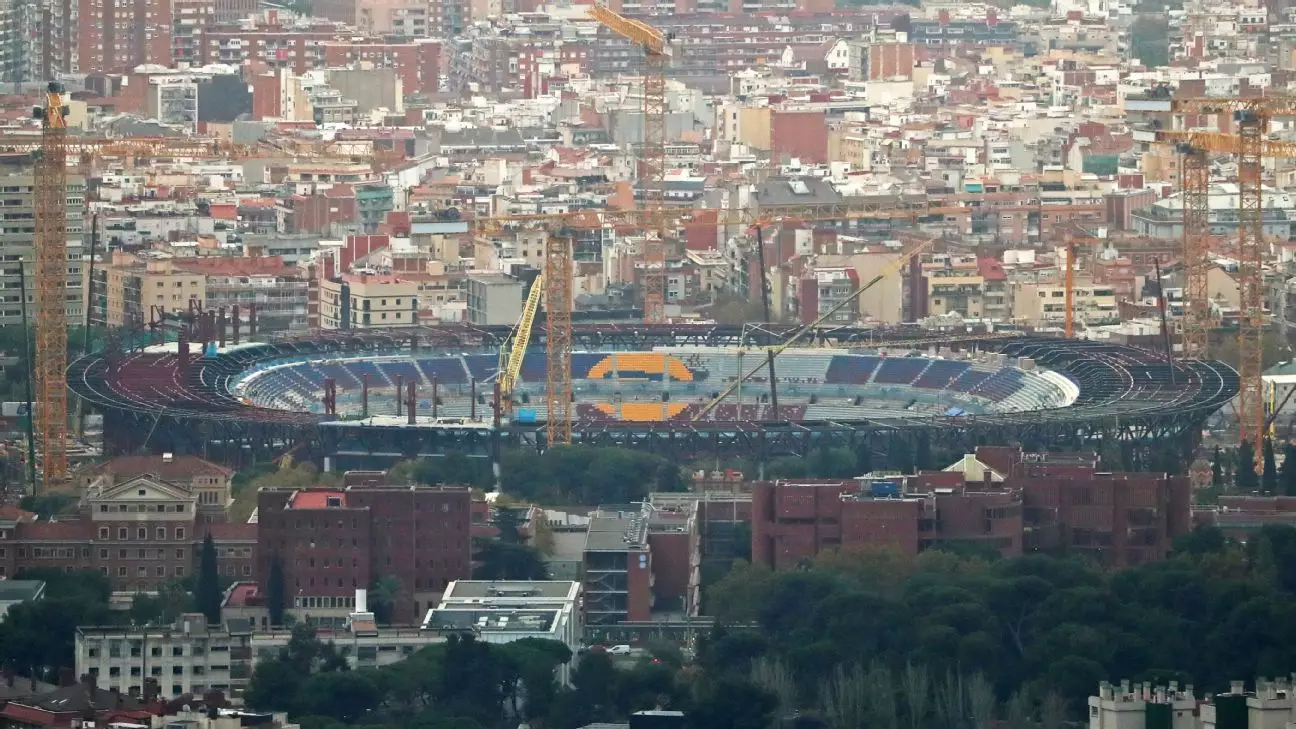FC Barcelona is facing significant challenges in their ongoing efforts to return to Spotify Camp Nou, with recent reports suggesting that the anticipated re-opening may be postponed until the next season. Initially, the club aimed to celebrate its 125th anniversary at their iconic stadium, with plans to return by November. However, as the months have progressed, it has become increasingly clear that project timelines have not been met. Despite the assurances from president Joan Laporta, it seems that the club may not be able to fulfill its promise of returning to their historic grounds by March, which coincides with the Champions League knockout stage.
The delays stem primarily from more extensive work required on the second tier of the stadium than officials had originally anticipated. The more intensive renovations have hindered progress on many fronts, including the installation of a new playing surface. A proper pitch is essential for elite-level football and must be prepared well in advance—up to three months—before the first match can be played. Currently, construction machinery dominates the playing field, stalling the process even further.
Strategic Planning Amid Uncertainty
Laporta’s desire to meet the March deadline is compounded by UEFA regulations, which state that once a team has played a home knockout match in the Champions League, they cannot alter their stadium arrangements for the remainder of the tournament. This places Barcelona in a precarious position as the only opportunity to switch venues is during the transitional period between league matches and knockout fixtures.
The club has developed a phased approach to its return to Camp Nou. The initial stage involves operating at a reduced capacity of around 60,000 spectators while construction continues, an effort that speaks to Barcelona’s desire to maintain a connection with its fan base during this tumultuous phase. Ultimately, the club aspires to increase the stadium’s capacity to approximately 105,000 by the project’s completion in the summer of 2026, which would position Camp Nou as the largest stadium in Europe.
A Temporary Solution
Since leaving Camp Nou in 2023, Barcelona has temporarily relocated to the Olympic Stadium in the city. Their lease on this alternative venue has been extended until March, demonstrating the club’s flexibility in navigating through this uncertain period. Should the redevelopment of Camp Nouextend beyond initial expectations, it appears they will utilize the option to extend their lease further.
FC Barcelona’s journey back to Camp Nou is fraught with complications and uncertainties. The ambitious redevelopment project has encountered unforeseen delays that threaten to derail their plans. As the club grapples with logistical constraints and fan expectations, the timeline for their return remains hazy. The resolution of these issues will determine not only Barcelona’s immediate future but also the legacy of its storied home ground as it evolves into a modern spectacle fit for contemporary football.

